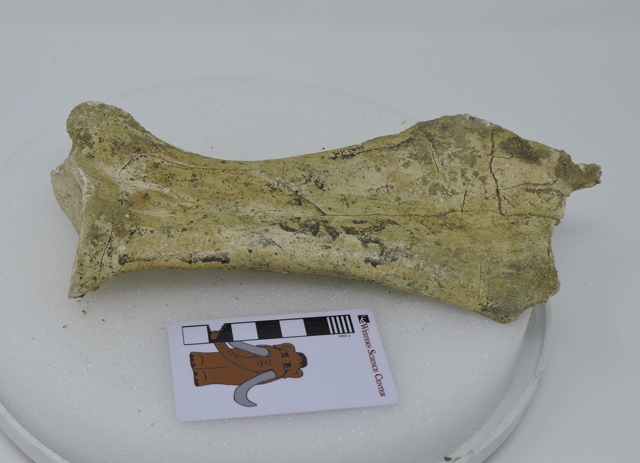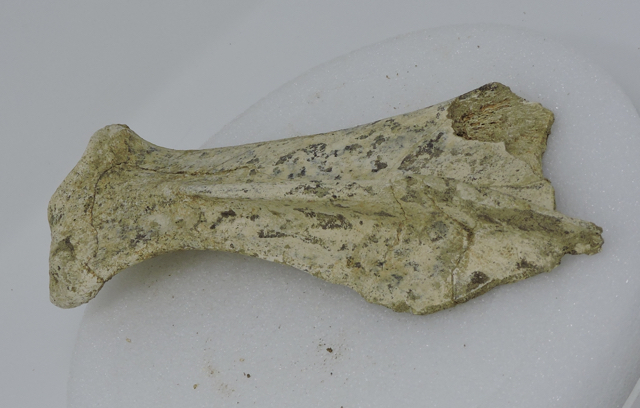 This week we continue our documentation of Pleistocene fossils from the Harveston section of Murrieta, California, with a horse scapula.This specimen is a partial right scapula, shown above in medial view. It's missing a small part of the dorsal edge, on the right in the photo. The part of the scapula is cartilaginous in young animals, and actually only ossifies fairly late in ontogeny, so it's not unusual to be missing this area.
This week we continue our documentation of Pleistocene fossils from the Harveston section of Murrieta, California, with a horse scapula.This specimen is a partial right scapula, shown above in medial view. It's missing a small part of the dorsal edge, on the right in the photo. The part of the scapula is cartilaginous in young animals, and actually only ossifies fairly late in ontogeny, so it's not unusual to be missing this area. The lateral view is shown above, with anterior at the bottom (this image is missing the scale bar because these are part of a set used to produce a photogrammetric model). The surface on the left is the edge of the glenoid fossa, the articulation with the head of the humerus (the "shoulder socket"). A bone ridge, called the scapular spine, is pointing straight at the camera and divides the scapula into concave anterior and posterior surfaces. The anterior portion is called the supraspinatus fossa, while the posterior part is the infraspinatus fossa; each serves as the attachment points for muscles of the same names, that are involved in rotating the forelimb.I've uploaded a 3D model of this specimen on Sketchfab, available at https://skfb.ly/6y9VM.
The lateral view is shown above, with anterior at the bottom (this image is missing the scale bar because these are part of a set used to produce a photogrammetric model). The surface on the left is the edge of the glenoid fossa, the articulation with the head of the humerus (the "shoulder socket"). A bone ridge, called the scapular spine, is pointing straight at the camera and divides the scapula into concave anterior and posterior surfaces. The anterior portion is called the supraspinatus fossa, while the posterior part is the infraspinatus fossa; each serves as the attachment points for muscles of the same names, that are involved in rotating the forelimb.I've uploaded a 3D model of this specimen on Sketchfab, available at https://skfb.ly/6y9VM.
